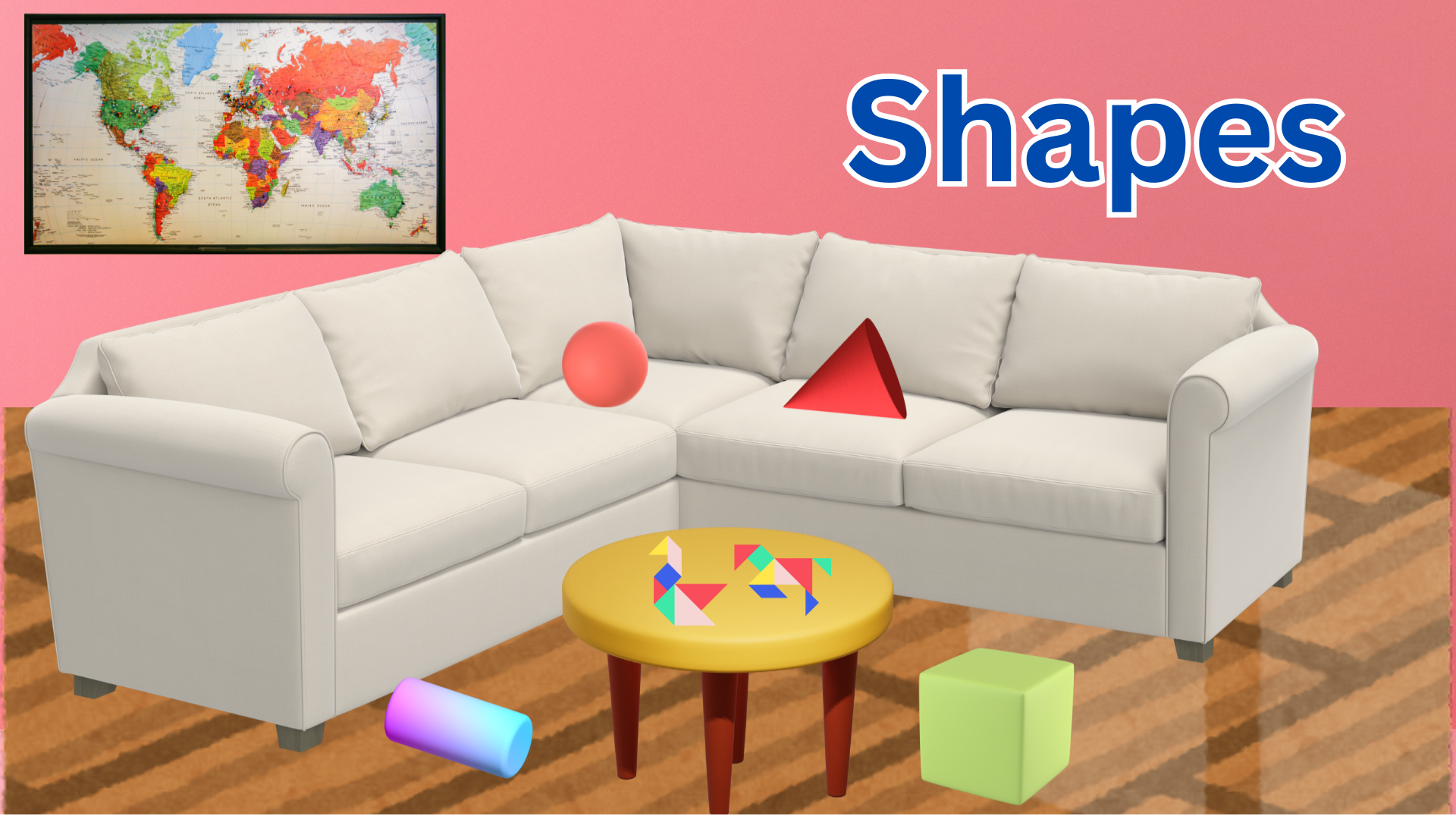Shapes
Hello, my little stars Have you ever looked around and noticed how many shapes are hiding all around you? Your lunch box, your kite, your bangles, even the coins in your piggy bank — they’re all made of shapes! Today, let’s play, discover, and understand the world of shapes. Ready? Let’s go! What Are Shapes? Shapes are all around us. Some are flat like your drawing book — we call them 2-D shapes (two-dimensional). Others are thick and can be held from different sides — those are called 3-D shapes (three-dimensional). 2-D Shapes: The Ones You Can Draw on Paper Triangle Say hello to the triangle!It has: Just like a slice of pizza! Quadrilateral Now meet the quadrilateral. A big word, but don’t worry — it just means any shape with four sides.It has: Let’s Try Some Folding Fun! Take a square paper. Fold it once to make a triangle. Fold the sides again… and guess what? You can even make a shape like a bird! Isn’t that magical? Paper folding helps us see how shapes can change and move, but still stay shapes! 3-D Shapes: Shapes You Can Hold Here’s the fun part — the world of solid shapes! Let’s play with two of them: Playing with Tiles Have you ever seen the beautiful tiles on floors? Some tiles fit perfectly together without any gaps. These are called tiling tiles. For example: Next time you walk on a tiled floor, take a closer look. You’re walking on patterns made of shapes! Reading a Map — It’s a Shape Adventure! Maps are full of signs and lines — and guess what? They’re all shapes too! One day, Niharika and Nishant visited Bagalkot and learned how rivers, railway lines, tourist places and highways are all shown using simple shapes and colours on a map. Maps help us know where we are and where we’re going — just like a treasure hunt! Drawing with Dots By joining dots with straight and curved lines, you can create all sorts of pictures — leaves, stars, flowers, and more. This helps us see how shapes make up everything around us, even art! What Is a Tangram? Oh, now this is super fun! A tangram is a puzzle made from different flat shapes. When you put them together in the right way, they form animals, birds, houses, and many more things! Tangrams come in 5-piece or 7-piece sets. It’s like building with shapes — and it’s so much fun for your brain too! FAQs Q1: What’s the difference between 2-D and 3-D shapes? A 2-D shape is flat — like a drawing on paper. A 3-D shape is thick and can be held — like a box or a ball. Q2: How can I remember the sides and corners of shapes? Easy! Q3: What’s a diagonal? It’s a straight line that connects two opposite corners inside a shape. Like a secret shortcut inside a square! Q4: Why do some tiles leave gaps when placed together? Because not all shapes fit together without spaces. Tiles that fit with no gaps are called tiling tiles. Others, like circles, leave spaces. Q5: Why are tangrams good for kids? Tangrams help you imagine, solve puzzles, and create your own pictures using shapes. It’s a fun way to grow your brain! Take assessment: 1. Oral Questions (For classroom discussion or informal assessment) 2. Multiple Choice Questions (MCQs) 3. Fill in the Blanks 4. Match the Following Column A Column B Triangle 4 sides Quadrilateral 3 sides Coins Hollow cylinder Bangles Solid cylinder Square Tiling tile 5. True or False 6. Label the Diagram (Use simple pictures of triangle, quadrilateral, solid cylinder, hollow cylinder, map, etc.) Instructions: 7. Sorting Questions Group these objects as 2-D or 3-D: 8. Short Answer Questions 9. Drawing and Construction Questions 10. Higher-Order Thinking (HOT) Questions 11. Map Reading Questions (Use a simple illustrated map similar to textbook)



